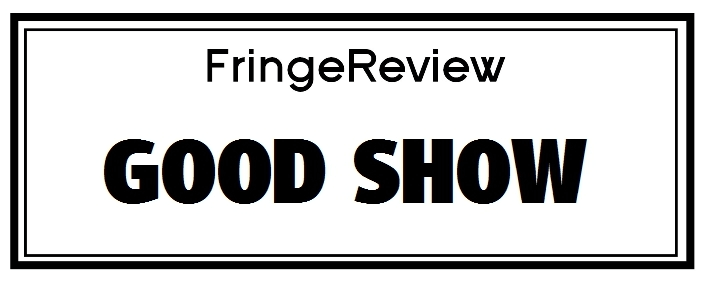Brighton Fringe 2017
Bethnal Green
Lucky Dog

Genre: Drama, Fringe Theatre, Theatre
Venue: Sweet Venues
Festival: Brighton Fringe
Low Down
This two-hander account of a forgotten World War II tragedy holds much promise.
Review
A strange, unpleasant smell filled the air as we queued up for the show, with everyone pulling faces and trying to ascertain who, or what, was the culprit. We were then led into a blacked-out theatre by two unusually polite—by today’s standards—air raid wardens (Tony Carpenter and Philip Hutchinson), shining their torches and guiding us to our seats like a couple of militarised ushers, which help set the feel for the piece set in worn-torn London.
The smell, they revealed, came from the combination of camphor and chemical toilets that permanently permeated London’s shelters during World War II. Fortunately the offending odour was switched off after the explanation, but it was a very effective means of entering this subterranean lifestyle.
Carpenter and Hutchinson play numerous characters, from old ladies and little boys to government officials and nurses, through a series of costume changes as they relay real eyewitness accounts, building up different perspectives of the same incident, when 173 people were killed in a crush on the steps of Bethnal Green tube station during an air raid.
The performance is relentlessly grim, with descriptions of clumps of buttons, hair and bodies found on the stairs and the revelation that despite 15 funerals a day it took over a week and a half to bury all the victims. A recreation of those victims’ screams is played on a backing track, creating a harrowing and distressing mood. And there lies part of the problem. While obviously it would be inappropriate to be cracking jokes about such a tragedy the endless grind and litany of mayhem and death wears the audience down after a while. There is a little variation in the rhythm and beat of the story that leaves the performance a little flat, instead of building the tension up towards the horrific climax and its aftermath.
The other concern, aside from the performers’ obvious initial nerves and line fluffs, was the format. The technical lighting trick of an alternating spotlight illuminating each narrator in turn failed spectacularly in the small theatre, meaning both actors were permanently visible and the loss of this dramatic effect was keenly felt.
There are obvious parallels to be drawn here with the 1989 Hillsborough disaster, with the initial blame being placed on the victims and the government and Winston Churchill-led cover up—it was deemed a civilian matter and poor for the nation’s morale, so hospital staff were told to shut up about it.
Having said all that, this is an important story that needs to be told, and we’re sure that it will improve over time once the initial teething problems are ironed out.


















































